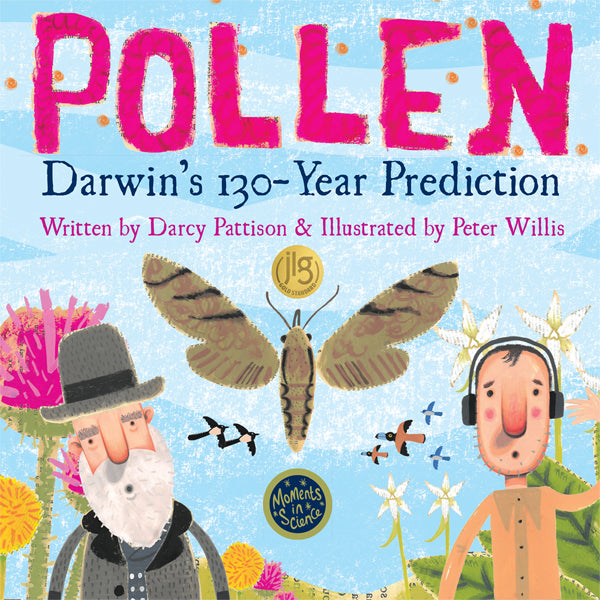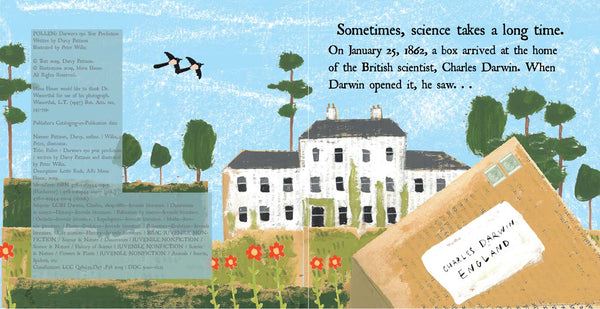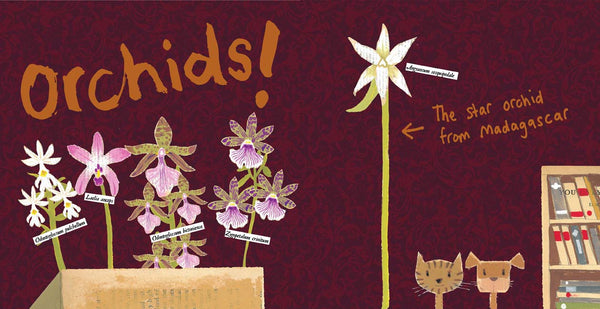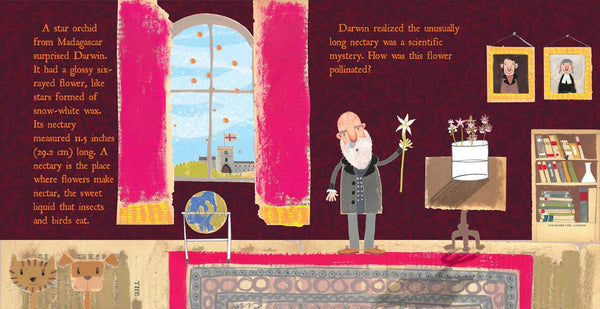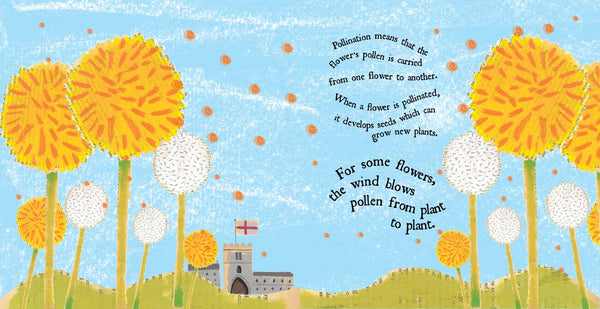Charles Darwin Predicted it; 130 Years Later, Lutz Wasserthal Proved It!
-
Junior Library Guild selection
- Starred Kirkus Review
- 2020 NSTA Outstanding Science Trade Book
- Eureka! NonFiction Honor Book (California Reading Assn.)
“POLLEN is extraordinary! What a great story that encapsulates so many important concepts in science - pollination, structure and function of living things, and how scientific discoveries take time. It is so well written and will make a wonderful read-aloud.” Emily Morgan, co-author of Picture Perfect Science
Elementary Science – POLLEN
How long does it take for science to find an answer to a problem?
On January 25, 1862, naturalist Charles Darwin received a box of orchids. One flower, the Madagascar star orchid, fascinated him. It had an 11.5” nectary, the place where flowers make nectar, the sweet liquid that insects and birds eat. How, he wondered, did insects pollinate the orchid? It took 130 years to find the answer.
After experiments, he made a prediction. There must be a giant moth with a 11.5” proboscis, a straw-like tongue. Darwin died without ever seeing the moth, which was catalogued by entomologists in in 1903. But still no one had actually observed the Darwin hawk moth pollinating the orchid. In 1992, German entomologist, Lutz Thilo Wasserthal, Ph.D. traveled to Madagascar. By then, the moths were rare. He managed to capture two Darwin hawk moths and released them in a cage with the orchid. He captured the first photo of a Darwin hawk moth pollinating the flower, as Darwin had predicted 130 years before.
Backmatter includes information on the moth, the orchid, Charles Darwin, Lutz Wasserthal. Also included is Wasserthal’s original photo taken in 1992.
Who Was Lutz Thilo Wasserthal?
German etnymologist Lutz Thilo Wasserthal, Ph.D. (1940 - ) wasn't the first scientist to study Darwin's hawk moths. But he was the first scientist to travel to Madagascar and capture photographs of a hawk moth pollinating the Madagascar star orchid. Wasserthal said the environment was so degraded that in a two-week period, they only saw two hawk moths.
Important Facts about Lutz Thilo Wasserthal
- Wasserthal studied the circulation and respiration of insects.
-
Wasserthal's main interest was the study of butterflies and moths.
- Wasserthal worked as the Chair of the Department of Zoology at University Erlangen, in Nuremberg, Germany.
- Wasserthal's photo of the hawk moth pollinating the Madagascar star orchid is included in this children's book, POLLEN.
Moments in Science
This eight-book series of nonfiction STEM books highlights biographies of scientists and moments when science changes in some way: a discovery, a new understanding, a new photo, or a Nobel prize award. Scientist's biographies combine with an historical event, and they are wrapped up in clear, concise, and fun explanations of scientific principles. Come and have fun reading an excellent nonfiction picture books.
This series has received a starred review, two NSTA Outstanding Science Trade Books, Junior Library Guild selection, NSSTA Notable Social Studies Book, and the Eureka! NonFiction Honor award (CA Reading Assn.). See the entire MOMENTS IN SCIENCE series here.

